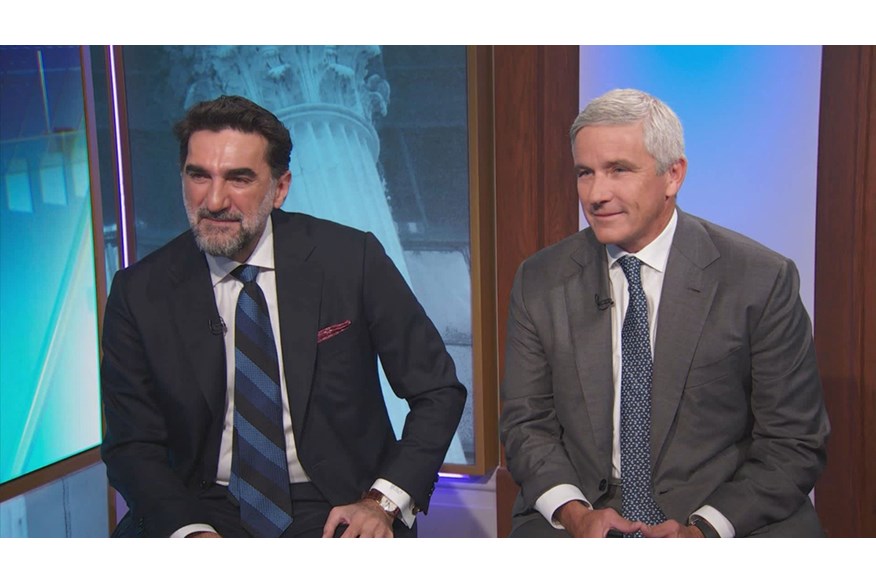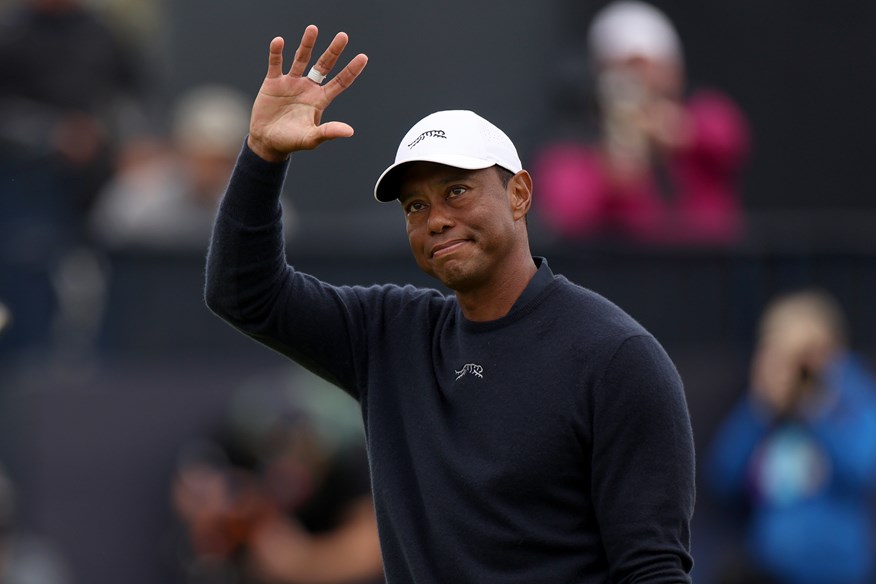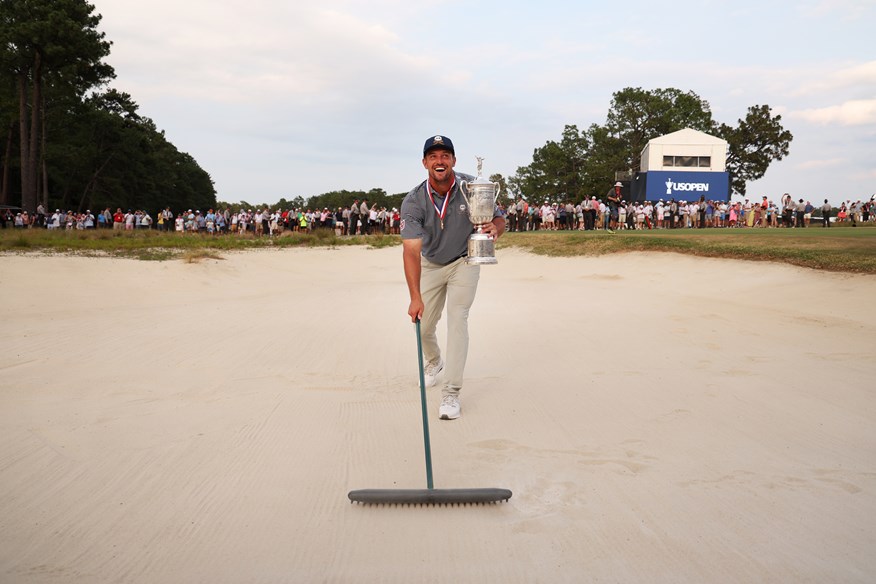Is YouTube golf killing the PGA Tour?
Last updated:
The numbers show that interest in tour golf is waning as people get their golf content fix on YouTube.
As a 40-year-old part-time golf journalist, I probably shouldn’t admit this, but I watch a lot more golf on YouTube than on TV.
In terms of traditional TV coverage, I’ll be glued to all four days of the Masters and The Open. I won’t miss a minute of a Ryder Cup. I’ll take in a bit of the U.S. Open and the PGA Championship. Maybe some of the Players Championship at Sawgrass and the BMW PGA Championship at Wentworth. But that’s about it.
Why does this matter? Because I’m not the only one.
2024 has not been a good year for tour golf.
TV viewing numbers have fallen.
Outside of majors, a final round of PGA Tour action averages around 2.2 million viewers. That’s 19% down on last year.
Even the Masters had its lowest final-day viewing figures in modern times.
And fewer fans means reduced appeal for sponsors.

It doesn’t help that there’s still no formal agreement between the PGA Tour, the PIF, and the Strategic Sports Group, which means the world’s best golfers will continue to play on separate tours for at least another season.
At the RBC Canadian Open in May, RBC’s Chief Marketing Officer Mary DePaoli spoke of her frustrations about the state of the game. “I think we’re probably all feeling the same. We’re all experiencing this, whether it’s as a sponsor or a fan or the players. We are all watching the PGA Tour right now, trying to sort through a business model that has been under some significant strain, and has still not fully resolved itself. And that’s still to be determined, so it’s requiring a lot of patience.”
One firm that ran out of patience was Wells Fargo, who opted to terminate their 16-year association with the PGA Tour.
The problem for tour golf is that it’s in its weakest state at the very moment it needs to be at its strongest.
The emergence of free content on YouTube and other free platforms would have been a challenge for TV golf in the same way it has been for traditional media in other fields; it just so happens that tour golf is an easy target at the moment because it’s in a mess.
Of course, some traditionalists will always opt for the Golf Channel over Good Good, for Sky over Shiels, but the balance is only tipping one way.
And things will only get worse for traditional broadcasters as time goes on. My parents buy a newspaper every day; my niece and nephew never have and never will. I’d be surprised if they ever pay for a Sky TV package. How many young golf fans now are going to sit down and watch 10 hours of TV coverage, with Ken Brown rolling balls around a putting green or Wayne Riley talking about airplane food, when they can watch quick, all-action highlights packages on YouTube or TikTok?
Despite the success of Full Swing on Netflix, the PGA Tour is acutely aware that much of the youth market doesn’t really care for many of its members. Scottie Scheffler and Xander Schauffele are the world number one and two golfers. They’ve won three of this year’s four majors between them. They’re incredible golfers, no doubt, but they’re not box-office entertainers. Show their photos to non-golfers and I’d bet most couldn’t name either of them.

It doesn’t help that the game’s biggest star – Tiger Woods – is almost 50 and barely able to play these days. Or that golf’s next most captivating player – and winner of this year’s other major – doesn’t even play on the main tour or its broadcast channels.

I’m talking Bryson DeChambeau.
Love him or hate him, a dive into the digital and social data demonstrates that the PGA Tour needs Bryson DeChambeau almost as much as the game needed Tiger Woods in the 1990s.
If that statement seems like a stretch, let’s just look at the traction that the US Open winner is gaining, and across so many different audiences and demographics that make up that vital youth market.
While DeChambeau’s membership of LIV Golf is not doing much for the visibility of the Saudi-backed tour’s key events, he is getting more engagement and interest as LIV and the PGA Tour combined. Across the most important free-to-air platform for broadcast, DeChambeau is killing it on YouTube, with the type of numbers that both tours can only dream about.
He’s been posting for a fraction of the time but has already overtaken the PGA Tour for subscriber numbers, while leaving LIV and the DP World Tour in his dust.
| Channel | YouTube Subscribers |
| Bryson DeChambeau | 1,590,000 |
| PGA Tour | 1,500,000 |
| DP World Tour | 494,000 |
| LIV Golf | 375,000 |
DeChambeau’s 56-minute production with Donald Trump – where the pair try to break 50, using ‘best-ball’ at Trump’s Bedminster course – has racked up 13 million views. That’s more than the US television audience for the final day of the Masters.
The PGA Tour, by comparison, has averaged 27,000 views per video on its last 20 pieces of content.
Okay, so it’s Trump, and whatever your opinions, he has a large and enthusiastic following of his own, plus plenty more who will tune in to see if he makes a fool of himself. But DeChambeau’s videos consistently generate over a million views, with many reaching far higher numbers than that.
LIV, by the same token, will pull in tiny audiences on YouTube, with most videos garnering a few thousand views. Their highlights packages do tend to generate close to 100,000, but that’s still small fry compared to the kind of numbers Bryson’s channel is putting up.
For traditionalists who get their golf from Sky Sports, this will matter little. But for the future of the game and those vital generational markets, this is a stark reminder about how disinterested the younger players and viewers are becoming with golf’s tours.
This rush for greater traction, particularly on YouTube, is behind the PGA’s new Creator Classic concept which was rolled out in August and saw golf social media influencers brought in to play tournaments.
The Blackstone-sponsored package is significant given it marks some real innovation from the Tour and an attempt to go out and cultivate new audiences.
And, in a way, it worked. The Creator Classic was one of the most popular pieces of content the PGA Tour has posted this year. But is that just further evidence that an online audience is more interested in online creators than tour pros?
As we head towards the end of 2024, you can expect more announcements and innovations as the PGA Tour attempts to stave off the threat from YouTube creators. Will it work, and more importantly, will it satisfy its commercial partners? That’s the $4 billion commercial question.
Ian Mallon contributed to this feature.

